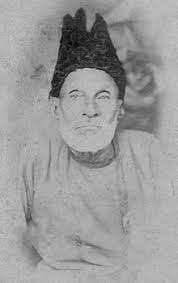Terracotta - the lost craftsmanship of Bengal
- Terracotta temples of Bengal are a tradition of the medieval period which attained prominence during the 13th and 14th century.
- Origin-With the rise of Bhakti and Sufi movements common people's relation with the worshipped deities became somewhat of a personal kinship. Thus with gradual decrease in Bhramanical supremacy we find Gods and Goddesses being nurtured as domestic members; Gopal as a playful child, Krishna as a friend, Durga, Laxmi and Saraswati as daughters and Shiva as the whimsical son-in law.
- Landlords started building these temples primarily for 3 reasons – as status symbol, for religious purposes particularly to promote the concept of Ram Rajya and as community spaces where elders narrated traditional stories.
- The making - Terracotta artisans flourished as stone was a scarcity in the alluvial plains of Southern Bengal. A mixture of mud and hay was put into designed moulds and then hardened as burnt bricks to form the terracotta plaques. The engravings were mostly scenes from Ramayana, Mahabharata, stories of Dhasavatara and Krishna, while those at the lower part of the temples depicted social scenes like hunting, harvest etc. Interestingly, the plaques constructed after 1764 often showed European soldiers in action with their characteristic hats. Another variation- called as the phoolpather used crushed laterite mixed with binders and then fired as clay. These were characterized by a harder texture and darker appearance. It’s a tragedy that the craftsmanship involved in the building of these terracotta temples has been lost forever hence dilapidated temples are now being very poorly restored.
- Replica of terracotta figurines, pottery, jewelry, and other decorative artefacts have immense aesthetic values even today.
- Some terracotta temples have barely survived the onslaught of time, an account of them are given below.
Birbhum
Kalikapur: Located 138 Km from Kolkata,
the Rajbari has two well maintained temples at its premises. Although the
palace is almost in shambles, with only the Durga dalan remaining, the temples
have been preserved by the trustees. The family is a descendant of Paramananda
Ray, the tax collector of Burdwan royal family who managed to maintain his
prominence even after the declaration of the Permanent Settlement Act in 1793.
There was an Indigo plantation nearby although nothing of it remains now.
Hetampur - Dubrajpur: Located 46 Km from Kalikapur,
this village was probably named after Hatem Khan, the revenue collector of
Mughal dynasty. This village faced the Maratha invasion. King Ranjan Ray built
the New Palace in 1905 for which he appointed Italian architects. Several
temples of this village were repaired with cement and only two temples still
retain the original pieces. The Chandranath Shiva Temple built in 1939 was
designed by an Italian person and bears plaques to commemorate Queen Victoria.
The Dewanji Temple was constructed in 1840s.
Album picture of Hetampur Palace
Ganpur: The Ganpur royals belonged to
the Chowdhury family who served under the Rajnagar rulers and later came under
the jurisdiction of the colonial rule. A cluster of 5 Shiva temples although
declared as heritage site were being so badly restored that the local people intervened
and took to its maintenance. Another terracotta temple complex comprising of 25
Shiva temples dates back to 1770-1774. Rash
festival is celebrated here.
Maluti: Situated at the Bengal –
Jharkhand border, this village originally had 70 temples although very few now
remain. It probably has some of the oldest temples of Bengal dating back to the
15th century Bengal Sultanate.
Pictures from Birbhum courtesy Immersive Trails
Hoogly
Antpur: Located near Tarakeshwar the
most famous terracotta temple of Radha –
Govinda - Jiu has a towering height of almost 100 feet. It was built by
Krishnaram Mitra, Diwan of Burdwan in 1786. The adjacent Rajbalhat town has the picturesque Radhakantajiu temple.
The
heritage towns of Guptipara, Tribeni
and Bansberia houses some terracotta
architectural splendours particularly the Hangsheswari Temple built between
1801 and 1814 by King Nrisinghadev, who had studied tantric philosophy in
Benares and designed the temple accordingly. Guptipara terracotta temples dates
back to the 17th and 18th centuries and is known
as the Brindabanchandra Math comprising of four separate Vaishnava
temples—Chaitanya, Brindabanchandra, Ramchandra and Krishnachandra. Parts of
the Zafar Khan Gazi mosque built in 1298 also bear terracotta ornamentations. Encrypted
figurines depicted Durga are found at Bali Dewanganj Durga mandir near Arambagh,
Gupinath mandir Dashghara, Advaita mandir Nadia among several others.
Bishnupur and Bankura
The rulers of the Malla dynasty ruled the territory, which included present day Bankura, parts of Burdwan, Birbhum, Santhal Parganas, Midnapur, Purulia and south eastern Jharkahnd collectively known as the Mallabhum kingdom. Of the Bishnupur temples, majority are not of terracotta but made of laterite which has a more rough texture. The distinctive temple architecture is linked to the 16th century Gaudiya Vaishnava devotional movement. The construction time of the terracotta temples ranges from 1622 to 1758. The notable ones built by the members of this dynasty are the Shyam Rai and Jor Bangla temples by Raghunath Singha, Malleshwar and Lalji temple by Bir Singha, Madan Mohan and Murali Mohan by Siromani, Jor Mandir by Gopal Singha, Radha Gobind by Krishna Singha and others.
Kolkata
During
the reign of Chaitanya Singha Dev, Lord Madan Mohan left Mallabhum in
accordance with the priest’s curse and is said to take shelter at the Madan
Mohan temple presently a much crumbling architechture at Bagbazar in Kolkata.
The original temple was destroyed in an earthquake and the present temple was
built.
A group of 5 Shiva temple (one has become extinct) are present at Chitpore Road built in 1700 by Bishnuram Chakraborty is now almost in shambles and escapes the passerby's view easily.
https://www.instagram.com/p/
The unique terracotta artisanship preserves the religious and architectural heritage of Bengal.
Reference:
1. Immersive trails virtual Birbhum visit
2. https://www.sahapedia.org/terracotta-temples-of-bishnupur
3. https://www.facebook.com/
4. https://en.wikipedia.org/wiki/Mallabhum_kingdom
5. https://en.wikipedia.org/wiki/List_of_temples_in_Bishnupur



































Comments
Post a Comment